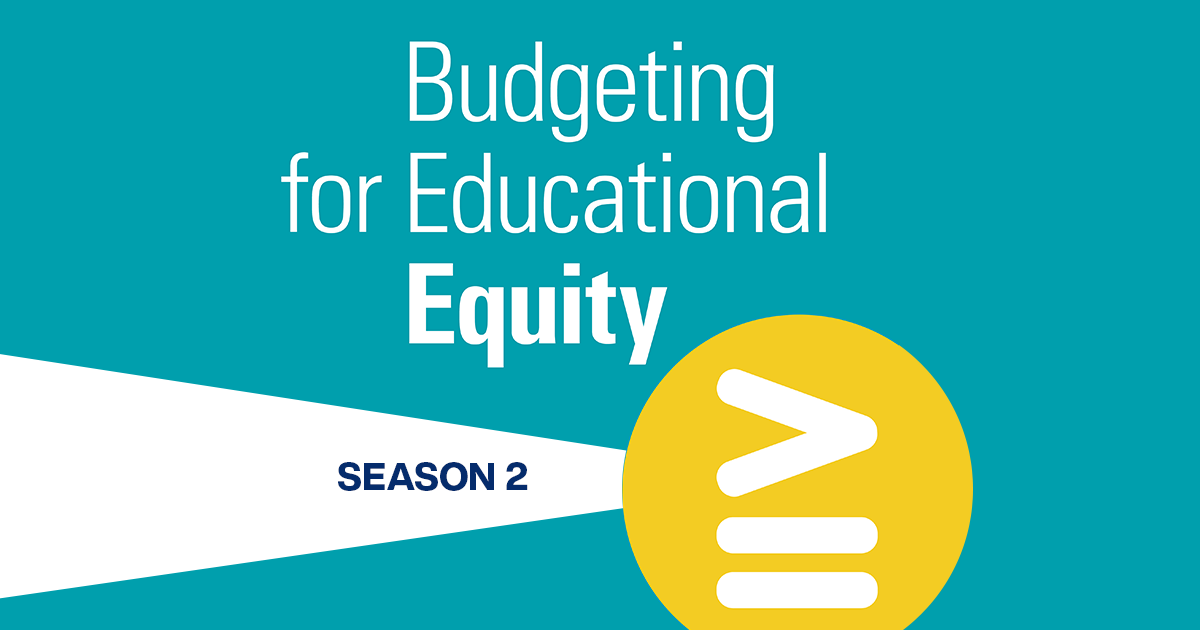Spotlight on Rural Education: Addressing the Challenges to Support Student Success
Posted on

The resources in this Spotlight are aimed at educators in rural communities, with an exploration of the adult education on-ramps to postsecondary opportunities, the opportunity cost of education, and the support needed for adult learners in rural communities; a Q&A about WestEd’s STEM STRONG project to support rural science teachers; a look at 4-day school weeks in one rural community; and an episode of the Budgeting for Educational Equity Podcast that focuses on the transformation of California’s Lindsay Unified School District, a small rural school district that’s gotten attention from education leaders all around the world.
Improving Access, Equity, and Economic Outcomes for Adult Learners in Rural Locations
 For many, economic mobility, or the concept of increasing one’s economic status over time, goes hand in hand with the “American Dream”—the idea that anyone, no matter their background, wealth, race, or geographical location, can achieve their goals and improve their economic status by working hard and educating themselves. But to achieve those dreams, people in all communities need to be connected to equitable and accessible on-ramps to economic mobility.
For many, economic mobility, or the concept of increasing one’s economic status over time, goes hand in hand with the “American Dream”—the idea that anyone, no matter their background, wealth, race, or geographical location, can achieve their goals and improve their economic status by working hard and educating themselves. But to achieve those dreams, people in all communities need to be connected to equitable and accessible on-ramps to economic mobility.
Postsecondary education programs, including community colleges, career and technical education, apprenticeships, on-the-job training, and 4-year universities and beyond, are crucial levers for achieving economic mobility. This is especially the case for rural communities, which face unique opportunities and challenges in accessing the education and training that results in achieving economic mobility. Research shows that rural students graduate from high school at a higher rate (90%) than students from cities (82%) or suburbs (89%). But rural communities often have limited access to education and employment opportunities, and they have limited resources for essentials like adequate housing or childcare—all possible contributors to the fact that only about 55 percent of rural students directly enroll in college. In the big picture, this means that a higher percentage of rural adults over age 25 hold a high school degree as their highest level of educational attainment compared with adults in cities and suburban areas.
The Center for Economic Mobility partners with communities to connect educational institutions with employers and enhance existing curricula that reflect high-demand skills in careers that provide family-sustaining wages and meet the adult learner where they are.
How Rural Teachers Are Taking On New Science and Engineering Standards
 Science educators applauded the release of 2013’s Next Generation Science Standards (NGSS), which emphasize solving real-world problems with scientific ideas and practices. But as educators began making shifts in the classroom to implement the NGSS standards, some teachers felt themselves falling behind.
Science educators applauded the release of 2013’s Next Generation Science Standards (NGSS), which emphasize solving real-world problems with scientific ideas and practices. But as educators began making shifts in the classroom to implement the NGSS standards, some teachers felt themselves falling behind.
“Rural teachers have historically been undersupported and underresearched,” says Dr. Ashley Iveland, Senior Research Associate at WestEd and Co-Principal Investigator for the STEM STRONG project, which brings together university researchers and learning experts with more than 140 elementary educators from rural communities in California, Montana, North Dakota, and Wyoming. “They face unique and sometimes monumental challenges that other educators don’t necessarily face in suburban or urban spaces.”
For instance, Iveland says, many rural teachers lack collaborators. “Sometimes they are their own principal, and there’s no one they can really work with for many miles,” she says.
STEM STRONG’s main mission is “modest supports.” Research has shown that intensive science professional learning is helpful to teachers, but the gains can evaporate quickly. Instead, STEM STRONG’s supports are less of an exclusive commitment for teachers than in-person professional learning sessions, and they last longer, too. Teachers are welcomed to a virtual professional learning community with a resource library, a collaborative Google Classroom, and regular team Zoom office hours to help teachers fine-tune their NGSS lessons.
“We’re talking about a transition from students learning about science to students actively figuring out phenomena and solving problems,” says Grace. “This changes the classroom dynamic completely.”
Exploring the 4-Day School Week in Rural Areas
 When one Alaskan principal wondered what effect her district’s highly popular 4-day school weeks was having on students, she turned to the new Ask an Expert service from the Regional Educational Laboratory Program (REL). This service offers evidence-based answers to weighty questions like this one.
When one Alaskan principal wondered what effect her district’s highly popular 4-day school weeks was having on students, she turned to the new Ask an Expert service from the Regional Educational Laboratory Program (REL). This service offers evidence-based answers to weighty questions like this one.
REL Northwest enlisted Dr. Paul Thompson, Associate Professor of Economics at Oregon State University and an expert on 4-day school weeks, to present the current research to principal Kate Williams and a team from her district. The result: more than 20 studies and analyses from 2015 to 2022 conclude that teachers and families love the shortened week but that decreased instructional time is connected with lower student achievement.
How One Rural School District Improved Student Outcomes
 Lindsay Unified School District (USD) in California’s Central Valley, as described by Grant Schimelpfening, Assistant Superintendent of Administrative Services, has 4,200 students in “a high poverty migrant community, primarily surrounded by citrus fields.” And yet this small district has captured the attention of educators with its innovative education system that’s had remarkable outcomes.
Lindsay Unified School District (USD) in California’s Central Valley, as described by Grant Schimelpfening, Assistant Superintendent of Administrative Services, has 4,200 students in “a high poverty migrant community, primarily surrounded by citrus fields.” And yet this small district has captured the attention of educators with its innovative education system that’s had remarkable outcomes.
Schimelpfening and Early Childhood Education Director Cheri Doria detail how they overhauled Lindsay USD in this episode of the Budgeting for Educational Equity Podcast. It spotlights Lindsay innovations like “personalized learning,” which replaces age-based grade levels with individualized learning plans. “So, for example, you could have a learner who’s in third grade math and fifth grade English because they haven’t finished all their targets for math yet,” says Schimelpfening.
There are no F’s in Lindsay USD, either: “If you fail math in high school, you don’t get an F on your transcript, you just take it until you pass it and then you move forward.”
Subscribe to the E-Bulletin
Stay informed about WestEd’s research, resources, services, events, and career opportunities by subscribing to our E-Bulletin. Our May 2024, Volume 2 issue examines new ideas and shares resources centered on education in rural areas. The issue features the following:
- Register for Summer Learning Opportunities
- Increasing Educator Retention and Diversity in Rural California
- Demystifying Science and Engineering Education in Rural Classrooms
- Exploring the 4-Day School Week in Rural Areas
- A Community of Practice Fills a Critical Gap for Rural Education Leaders
- Improving Rural Teacher Retention
- Lindsay Unified School District’s Blueprint for Student Success
- Social–Emotional Learning in Rural School Districts
Follow Us on Social Media
Join us on Facebook and LinkedIn to discuss your experience and ideas connected to rural educators and learners.
